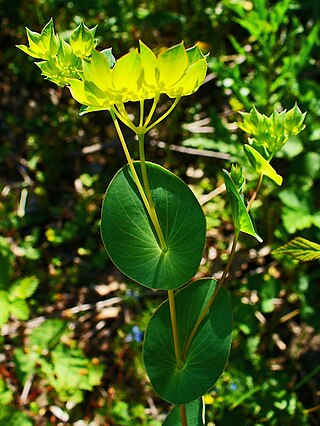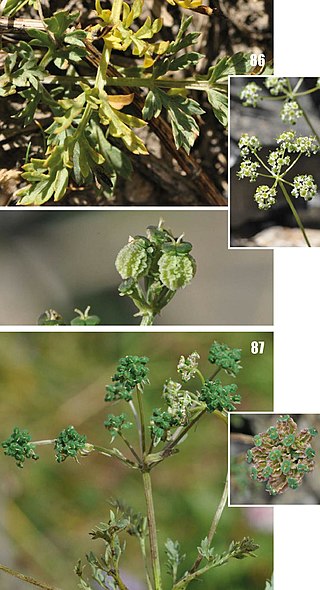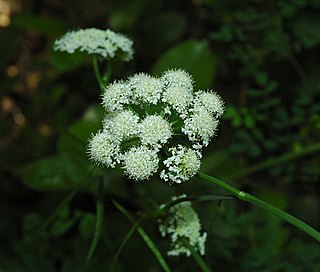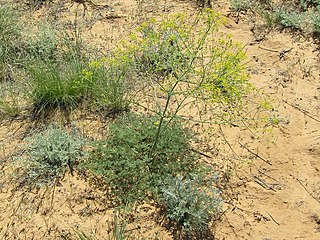
Bupleurum is a large genus of annual or perennial herbs or woody shrubs, with about 190 species, belonging to the family Apiaceae. The full size of its species may vary between a few cm to up to 3 m high. Their compound umbels of small flowers are adorned with bracteoles that are sometimes large and may play a role in attracting pollinators. Rare among the Apiaceae are the simple leaves, bracts, and bracteoles. The genus is almost exclusively native in the Old World Northern Hemisphere, with one species native to North America and one species native to southern Africa.

Aulacospermum is a genus of flowering plants in the family Apiaceae, with 15 accepted species. It is endemic to Central Asia and Eastern Europe.

Bunium is a genus of flowering plants in the family Apiaceae, with 45 to 50 species.

Cephalopodum is a genus of flowering plant in the family Apiaceae. It is native to the Afghanistan, Tadzhikistan and Uzbekistan.

Jurinea is a genus of flowering plants in the family Asteraceae.

Pimpinella is a plant genus in the family Apiaceae; it includes the aromatic herb anise (P. anisum).

Seseli is a genus of herbaceous perennial plants in the family Apiaceae. They are sometimes woody at base with a conic taproot. Leaf blades are 1–3-pinnate or pinnately decompound. Umbels are compound, with bracts few or absent. Petals are white or yellow, and the fruit ovoid or ellipsoid.

Ferulago is a genus of flowering plants in the family Apiaceae.
Cyclotrichium is a genus of plants in the Lamiaceae, first described as a genus in 1953. The entire genus is endemic to southwestern Asia.
- Cyclotrichium depauperatum(Bunge) Manden. & Scheng. - western Iran
- Cyclotrichium glabrescens(Boiss. ex Rech.f.) Leblebici - southeastern Turkey
- Cyclotrichium haussknechtii(Bunge) Manden. & Scheng. - western Iran
- Cyclotrichium leucotrichum(Stapf ex Rech.f.) Leblebici - Iran, Iraq, Turkey
- Cyclotrichium longiflorumLeblebici - Iran, Iraq, Turkey
- Cyclotrichium niveum(Boiss.) Manden. & Scheng - eastern Turkey
- Cyclotrichium origanifolium(Labill.) Manden. & Scheng. - Lebanon, Syria, southern Turkey
- Cyclotrichium stamineum(Boiss. & Hohen.) Manden. & Scheng. - Iraq, Turkey
- Cyclotrichium straussii(Bornm.) Rech.f. - western Iran

Acanthophyllum is a genus of flowering plants in the family Caryophyllaceae with about 75 species, spread in the Irano-Turanian area.

Prangos is a genus of flowering plants of the family Apiaceae, native from Europe to Mongolia and the western Himalayas.
Tetrataenium is a genus of flowering plants belonging to the family Apiaceae.

Korshinskia is a genus of flowering plants belonging to the family Apiaceae. It is also in the Tribe Pleurospermeae.
Paracaryum is a genus of flowering plants belonging to the family Boraginaceae.
Elwendia is a genus of flowering plants belonging to the family Apiaceae.

Elaeosticta is a genus of flowering plants belonging to the family Apiaceae.
Pseudotrachydium is a genus of flowering plants belonging to the family Apiaceae.











